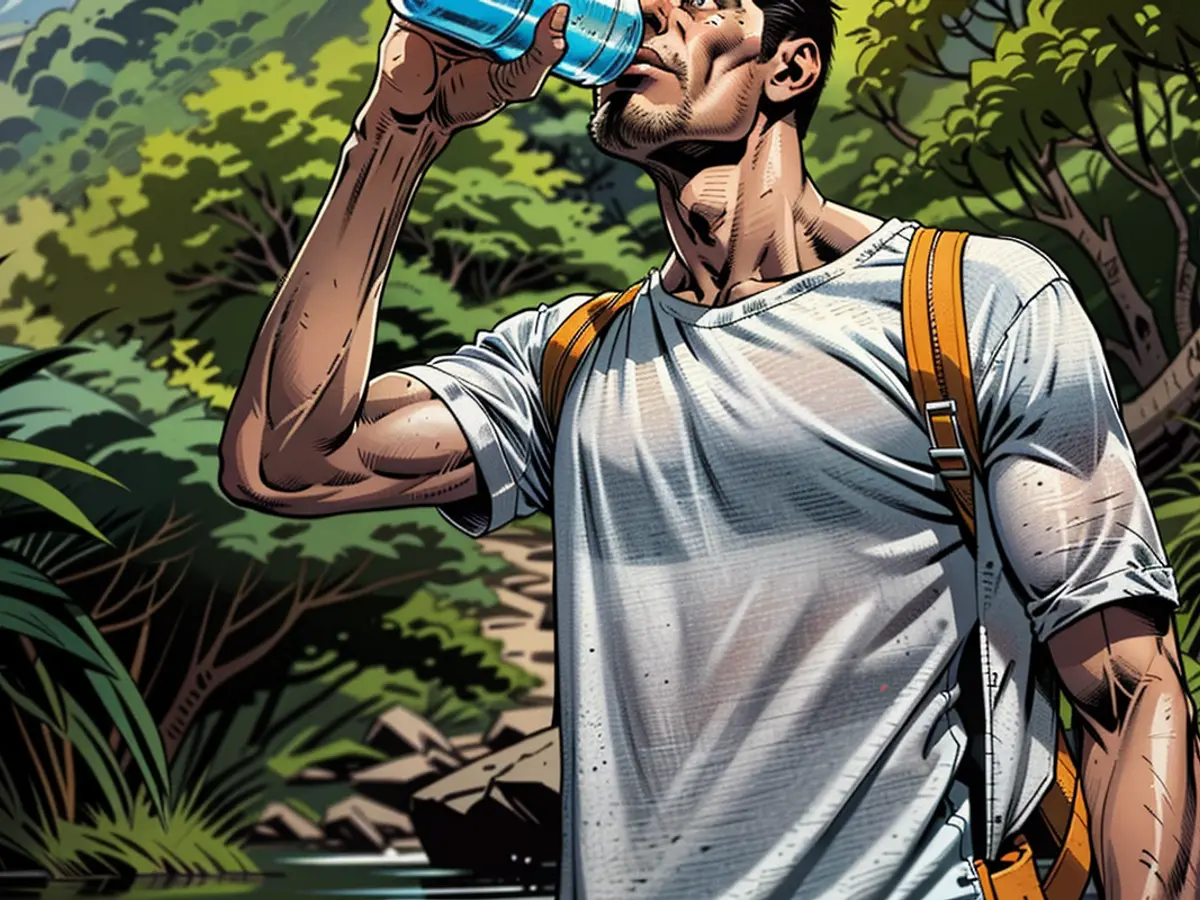Hiking Safety Tips in High Temperatures according to Experts' Guidance
Scorching temperatures are prevalent in numerous regions worldwide, increasing the risk and potential lethal consequences of hiking expeditions.
In June this year alone, a young duo was saved while hiking in a California desert, having run out of water and becoming severely dehydrated. The boyfriend was alert during the rescue, whereas the girl showed signs of a critical condition, as reported by KTLA, Los Angeles.
Sadly, not everyone has been so lucky. Last year, a 14-year-old boy lost his life while hiking with family members in Texas’ Big Bend National Park, when temperatures soared to 119°F (48°C). Tragically, a couple, a 1-year-old child, and a dog all perished in California's Devil’s Gulch Valley last year during a scorching day, believed to be due to hyperthermia and dehydration.
In Phoenix, where over 200 hikers are rescued annually, primarily because of hiking during the hottest hours of the day, the city implemented a program to temporarily close certain trails when the heat intensifies excessively.
Hiking safely in the heat
Despite the associated hazards, it is possible to undertake hiking adventures during high-temperature periods by following these expert recommendations.
Planning adequately for a hot hike
Regardless of the heat, ensure you are physically fit enough to tackle any hike. For example, if you plan on a challenging, 5-mile hike, make sure you can comfortably hike 5 miles before starting the trail.
To prepare for hot weather, gradually adapt to warm climates by taking short, easy hikes in warm conditions and gradually advancing to longer, more difficult hikes. If that's not feasible, plan your hike a few days into your trip to allow your body to become accustomed to the weather.
It's also beneficial to know your sweat rate. Dr. Floris Wardenaar, an assistant professor of nutrition at Arizona State University, Phoenix, recommends weighing yourself before and after several hikes, calculating your weight loss against the water you consumed during the hike.
Stock up on water and carry a water filter
Water is essential for any hike, especially in hot weather. Many hikers underestimate their water needs.
Always carry a water treatment device and electrolytes, advises Martinez. Electrolytes help replace the salts and minerals lost through sweating, reducing the risk of heat-related illnesses such as heatstroke and heat exhaustion.
Remember to bring extra water, even if it's heavy, said Teresa Ana Martinez, executive director, and co-founder of the Continental Divide Trail Coalition.
Hike in the morning on shady trails
“It's beneficial to hike earlier in the day instead of later in the evening because during the evening, the earth still retains heat from the day, which will radiate from the rocks,” explained Wardenaar.
If possible, opt for a trail that offers shade, such as wooded areas, trails near water, or cool canyons or caves. In case you struggle with the heat, these shaded areas provide a respite.
Wear light, baggy clothing that covers most of your skin
Long-sleeve shirts and pants might seem odd for a hot day, but they protect against sunburn and help maintain your body temperature.
A neck buff and hiking gloves are also recommended, stated Abe Christian, operations manager for the Florida Trail Association. The Florida Trail, extending more than 1,200 miles through the state, from Big Cypress Swamp to Fort Pickens, requires coverage to protect against the sun.
Take along a sun umbrella, phone, and a companion
Make sure your phone is fully charged in case of an emergency, and a portable battery is useful too. Martinez strongly advocates a sun umbrella, which shields your head from the sun's rays. (Look for those with an ultraviolent protection factor, or UPF, label or a seal of recommendation from groups such as the Skin Cancer Foundation.)
If possible, bring along a friend. A companion can help when you're experiencing dehydration, heat exhaustion, or heatstroke, and may not realize the danger they're in.
Retreat when in doubt
“If you start your hike and you feel it's too hot, it definitely is,” said Martinez. Turn back and postpone your hike to another day if necessary. Another recommendation: Turn back when you've consumed half of your water, even if you haven't reached your goal.
"Your arrogance can turn against you," Martinez cautioned. "It's easy to ignore the speed at which situations might spin out of control. You never know when your physique might shouts, 'I've reached my limit!'"
Melanie Radzicki McManus is a free-lance writer, expertise lies in hiking, tourism, and fitness.

Read also:
After a rigorous hike, incorporating a session of yoga or meditation into your wellness routine can help alleviate muscle soreness and reduce stress.
Regularly practicing activities like yoga and meditation can contribute to overall wellness, providing mental and physical benefits that are especially beneficial during post-hike recovery.








